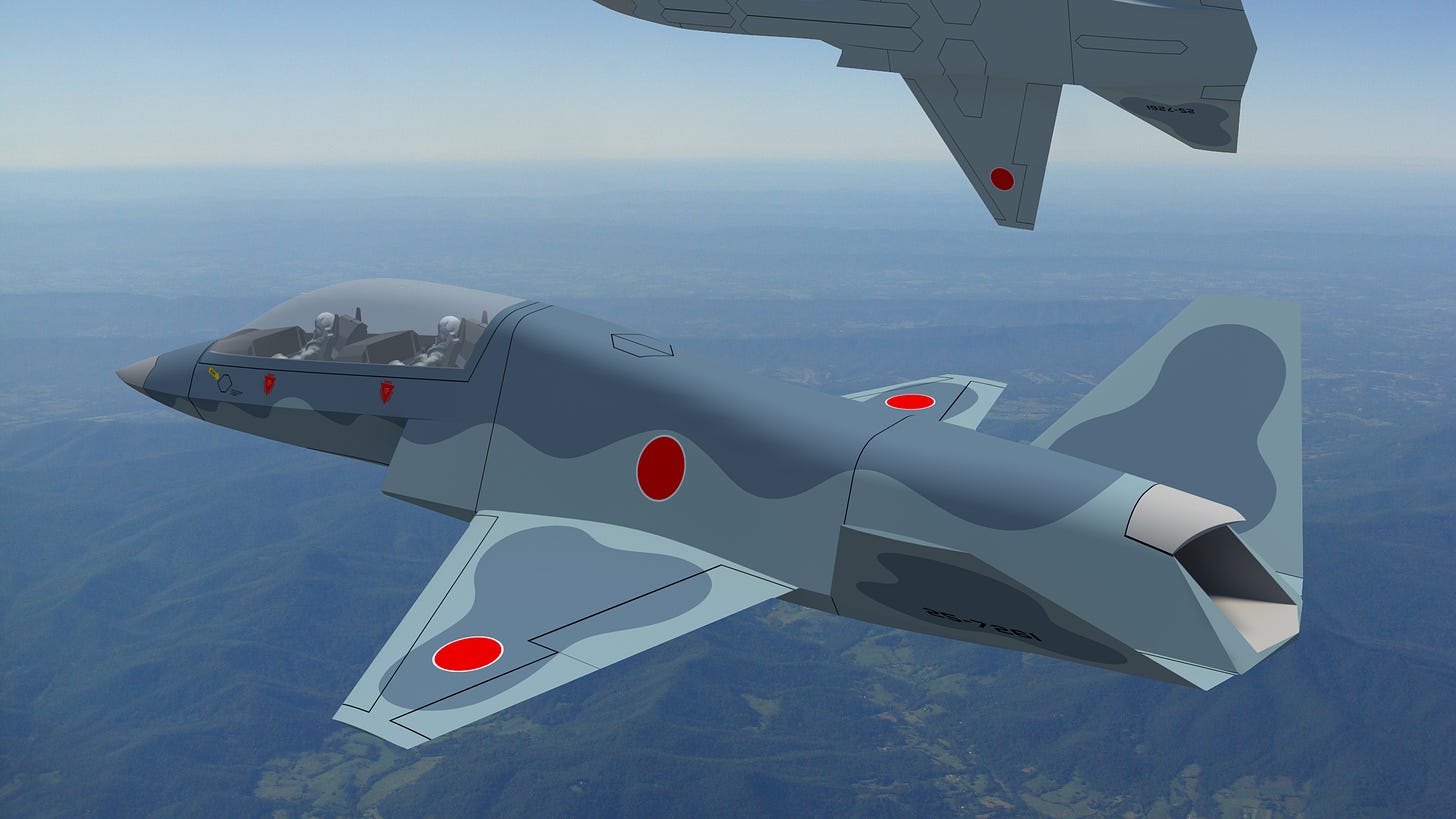Remember When a Company That Had Never Made an Actual Plane Wanted to Build the U.S. Air Force’s Newest Jets?
Minnesota-based Stavatti has shown off some impressively futuristic aircraft designs. But they're all the aerospace equivalent of vaporware: pure hype.
This story originally appeared in Vice in 2017.
An upstart, Minnesota-based aviation company has jumped into a $16-billion contest to build training jets for the U.S. Air Force.
The odds are long that Stavatti Aerospace will win. But perhaps not as long as the last time Stavatti tried to disrupt America's military aircraft industry.
When Stavatti first made headlines nearly a decade ago, the privately-held company was the industrial equivalent of an internet troll—spreading titillating graphics depicting futuristic airplanes it stood little chance of ever producing.
But the warplane market has changed since 2009. Small companies building clever planes stand a better chance today than they did then—and that could boost Stavatti's prospects from impossible to merely highly unlikely.
The Air Force wants to buy 350 training planes to replace its 1960s-vintage T-38s. On Dec. 30, 2016, the flying branch formally asked the U.S. aerospace industry for proposals.
The goal: to acquire trainers that can better prepare pilots for the latest F-22 and F-35 stealth fighters. “T-X is a program we've got to get right,” Air Force chief of staff Gen. Dave Goldfein said in a statement.
All the major aerospace firms worked on prototypes. Several dropped out, leaving America's top two defense contractors—Lockheed Martin and Boeing—to duke it out. Lockheed, based in Maryland, is offering the T-50, a nimble, single-tail jet it co-developed with a South Korean firm.
Chicago-based Boeing teamed up with Swedish company Saab to devise a twin-tail plane. Both the Lockheed and Boeing jets are supersonic and have two seats and one engine. [Editor’s note: the Boeing-Saab team ultimately won the contract.]
Boeing and Lockheed have been working on their trainers under intensive media scrutiny for years. So it came as a surprise to many observers when, on Feb. 1, 2017, Stavatti announced it, too, would compete—with not one, but two different planes.
CEO Chris Beskar told Motherboard he would submit the Javelin design it bought from a bankrupt aerospace firm and also its own, homemade Machete design.
Both planes are subsonic and come with unusual pedigrees. The 1990s-vintage Javelin once belonged to Colorado-based Aviation Technology Group, which hoped to produce hundreds of the twin-seat, twin-tail planes in conjunction with an Israeli company.
It wasn't to be. ATG went bankrupt in 2008. Stavatti scooped up the rights to the Javelin. “It's a nice airplane,” Beskar said. “It's sad when you look at the history of aviation that the project didn't get farther along. We're trying to pick up the pieces.”
Javelin is older than the Lockheed and Boeing planes are, but Beskar said that shouldn't matter. “We know a lot of people in the Air Force liked Javelin,” he said.
The prototype Javelin flew briefly in 2005. The Machete, on the other hand, exists only on paper. In 2009, Stavatti pushed the futuristic-looking Machete concept as a gun-armed attack plane to partially replace the Air Force's rugged, heavily-armed A-10 tank-killers, which critics claimed were overkill for fighting insurgents in Iraq and Afghanistan.
The Air Force decided to stick with the A-10. The Machete never got off the ground, so to speak. But Beskar said there's no reason the concept couldn't also be a good fit for the T-X competition.
Capt. Michael Hertzog, an Air Force spokesman, said the flying branch is willing to consider all options, including actually flyable prototypes and “developmental” planes that haven't gotten past the blueprint stage. “This program is not stovepiped either way.”
But realistically, either Boeing or Lockheed is likely to win. Between them, the two companies produce hundreds of airplanes a year for private and military buyers all over the world. The two companies employ thousands of the world's top designers and engineers.
Stavatti doesn't currently produce any planes. To say nothing of warplanes.
Of course, with computer-aided design, 3D printing and rapid prototyping, today it's theoretically possible for a reasonably competent company to develop a functional combat aircraft in just a few years and at low cost.
In fact, Rhode Island-based Textron designed its two-seat Scorpion attack jet in just two years starting in January 2012.
The Scorpion flew for the first time in December 2013. Simple and flexible, the Scorpion costs just $3,000 per hour to fly—a tenth as much as some heavier, supersonic fighters. Several air forces are reportedly considering purchasing the plane. Even the U.S. Air Force is interested.
Anticipating bigger budgets under Pres. Donald Trump, the flying branch has said it could buy potentially hundreds of new attack planes to finally begin replacing those old A-10s.
Beskar said Textron's gamble with the Scorpion has encouraged him to keep pushing his own plane designs. The deadline for Stavatti and the other competition entrants to formally submit their proposals for the T-X contest is March 30, 2017.
Despite starting work on his planes much later than Boeing and Lockheed did—and with far fewer resources—Beskar said he's optimistic. “We're not behind the curve.” [Editor’s note: they were behind the curve.]
Read more:






